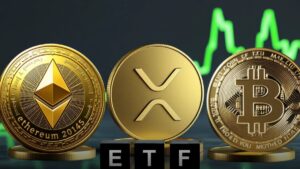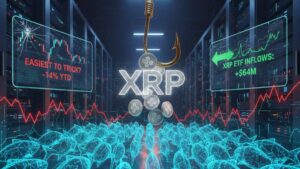The current financial and payment landscape, triggered by COVID-19 pandemic, is changing at a far more pace than expected. During lockdowns, businesses were forced to use digital channels to continue their operation.
Now the intensity of the pandemic has started to decrease, countries across the world are reopening and instituting recovery plans and policies. According to a survey, out of those using digital channels for the first time during the lockdown, 75% say they intend to keep using them in the future.
The post-COVID-19 world will be digital. Data reveals that the business adoption of advanced digital technologies leaped ahead by five years in the span of just eight weeks of lockdown. This increased use of digital technologies will also result in high energy consumption. So to ensure a sustainable digital future, the world needs sustainable systems.
A recent publication by Ripple team talks about how cryptocurrencies, especially XRP, can ensure our digital future.
According to Ripple, most of the businesses providing digital services and fueling the digital economy use cloud-based services consuming more and more energy with an ever-increasing demand. A study conducted before the pandemic says that cloud energy could increase by a whopping 300% in the coming decade. But the recent rise in the use of digital technologies will add much more to this. So the cloud is not an evergreen solution for the future.
Sending and receiving payments is the backbone process of all the businesses and economies of the world. At first, it seems that fiat transactions are cheaper than a single Bitcoin transaction as a fiat transaction consumes a 0.044 kWh of electricity as compared to 700 KWh of Bitcoin.
But in a broader look, “paper money still contributes to significant environmental damage when you factor in the deforestation, eutrophication and photochemical ozone creation stemming from its production and disposal—not to mention the greenhouse gas emissions that result from its transportation and the electricity banks consume to house and store this money,” said Ripple.
Cryptocurrencies are an answer to a sustainable digital future, but it depends upon the use of the right digital asset. According to Ripple, XRP could be the best choice to make a sustainable payment system. The company said that XRP is a much more sustainable asset than the likes of Bitcoin or Ethereum only consuming 0.0079 kWh of electricity per transaction.
Ripple said:
“A major reason why XRP is so much more sustainable than other cryptocurrency is that all XRP tokens currently exist, meaning no additional energy is required to make more of this asset. Meanwhile, Bitcoin and Ethereum continue to be produced via proof of work mining practices that gobble up energy.”
XRP also removes other monetary and environmental costs as XRP transactions can be settled instantly without these associated energy costs.
An electrically-fueled digital future is a reality, but the industry should also consider the effect it will have on the environment. Ripple concludes:
“Put simply, a digital future that works for all must also be a sustainable future.”
If you found this article interesting, here you can find more Ripple news


![Ripple [XRP] Says Cryptocurrencies Like XRP Can Ensure a Sustainable Digital Future](https://crypto-economy.com//wp-content/uploads/2020/08/DIGITAL-EYE-1024x576.jpg)
![ripple [XRP]](https://crypto-economy.com/wp-content/uploads/2022/12/xrp-6.jpg)







